December 2022 |
Show and Tell
From Kurt Shanebeck:
|
|
Outdoors coastal, north of Los Angeles: |
|
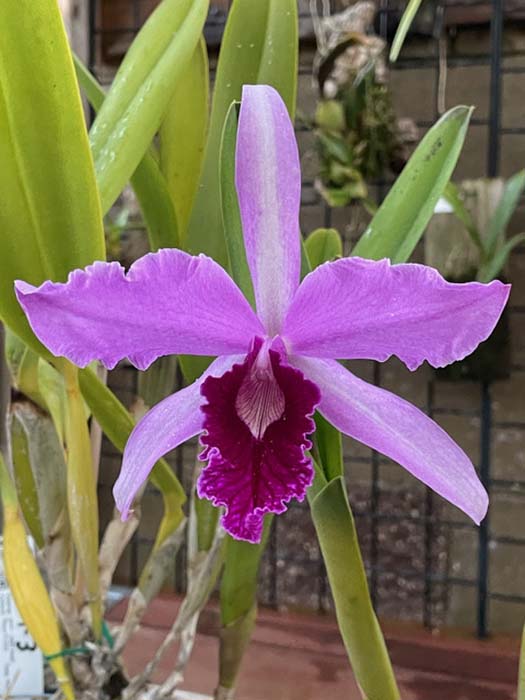
Cattleya lobataGrowing potted in bark with bright light. |

Cattleya praestans 'Rosada'Growing mounted with bright light. |
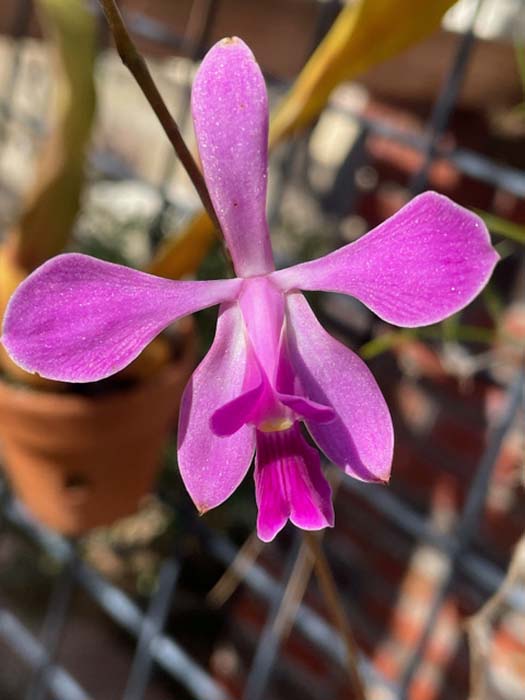
Encyclia dichromaGrowing mounted with bright light. |
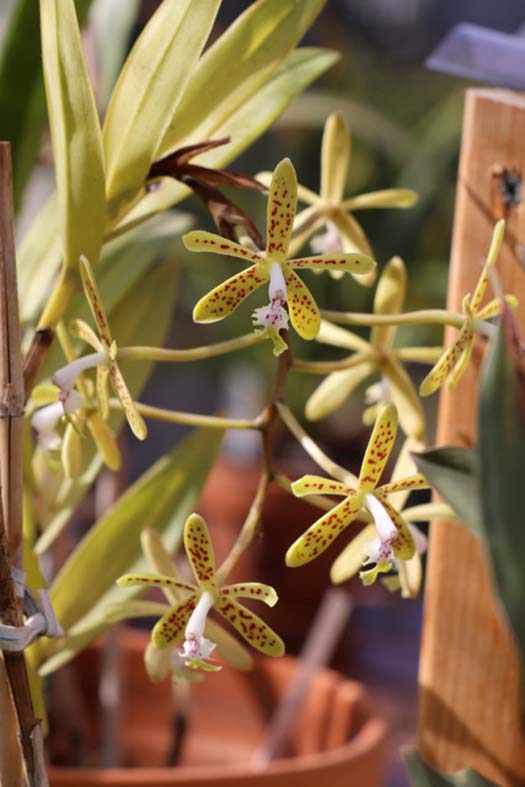
Epidendrum raniferumGrowing potted in bark mix with bright light. |

Isabellia virginalisUnique pseudobulbs surrounded with basket-like fibers and a singe needle-like leaf. Growing mounted and bright. |

Polystachya neobenthamia
|

Rhipidoglossum puchellum
|
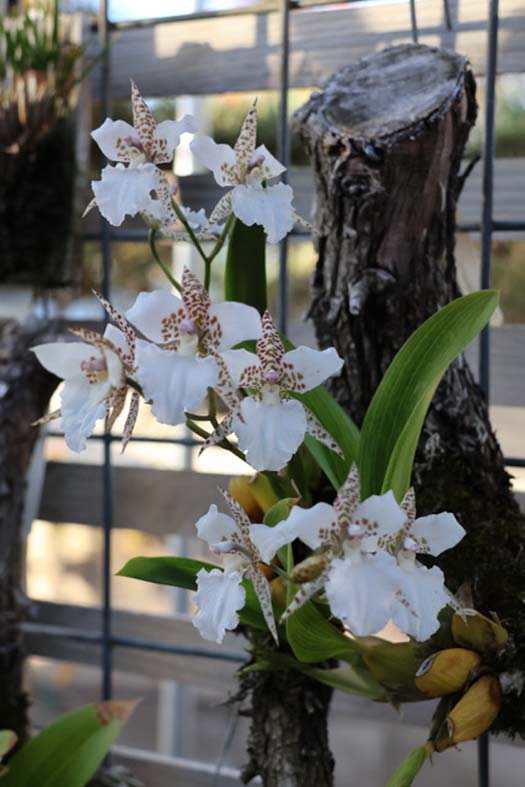
Rhynchostele rossiiGrowing mounted with moderately bright light. |
 Oncidium excavatum |
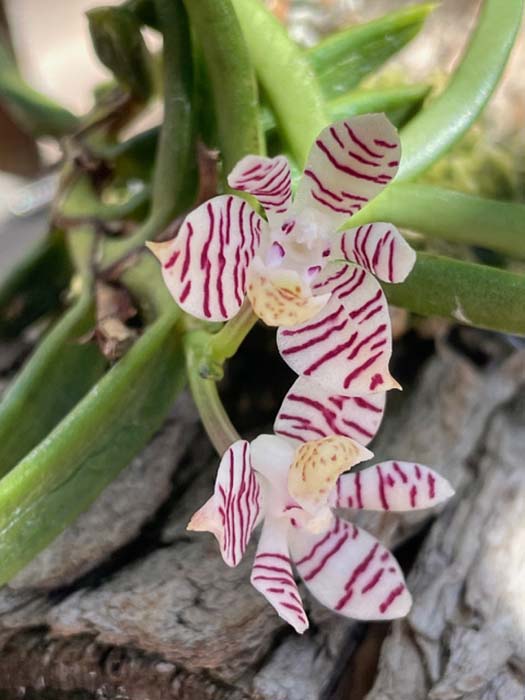
Trichoglottis pusillaGrowing mounted and bright. |
From Chris Ehrler:
|
|
Coastal, California Central Coast |
|
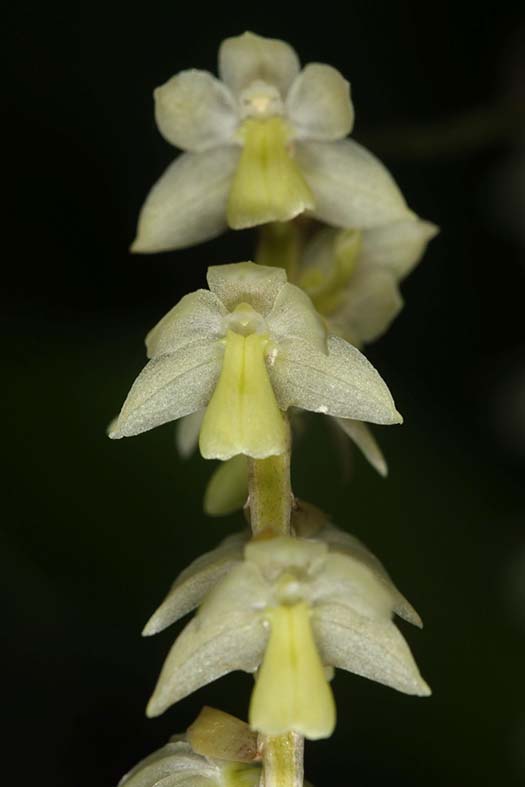 |
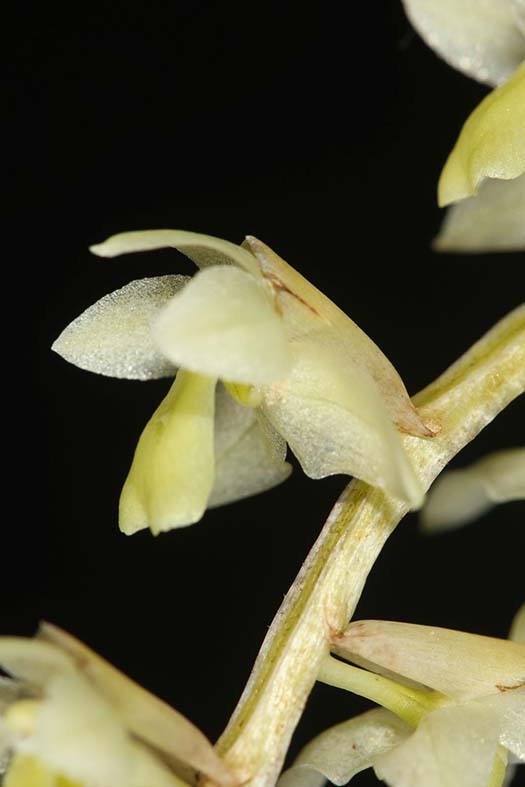 |
Dendrochilum cobbianumA cool growing species from the Philippines at elevations above 1200 meters. Grows either epiphytically or as a lithophyte. Growing in a cool greenhouse in a plastic container that is filled with hydroponic type clay balls. There is a hole drilled in the plastic so that there is no more than 1 inch or so of water in the bottom of the container.
|
 |
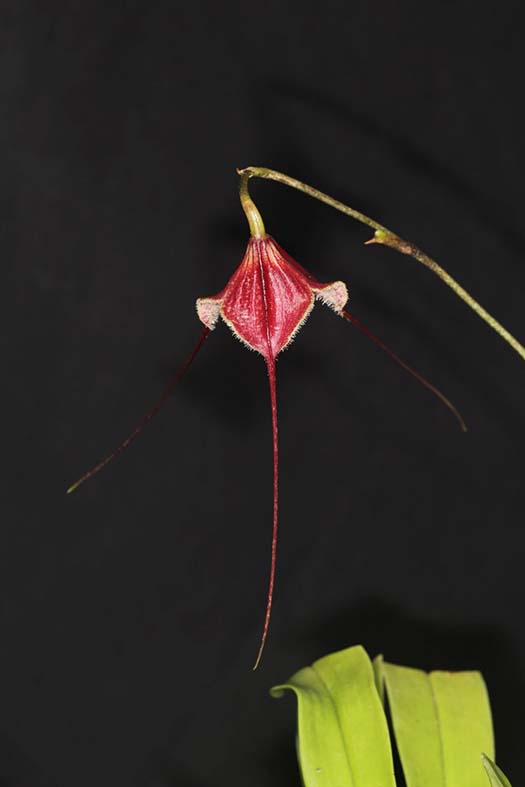 |
|
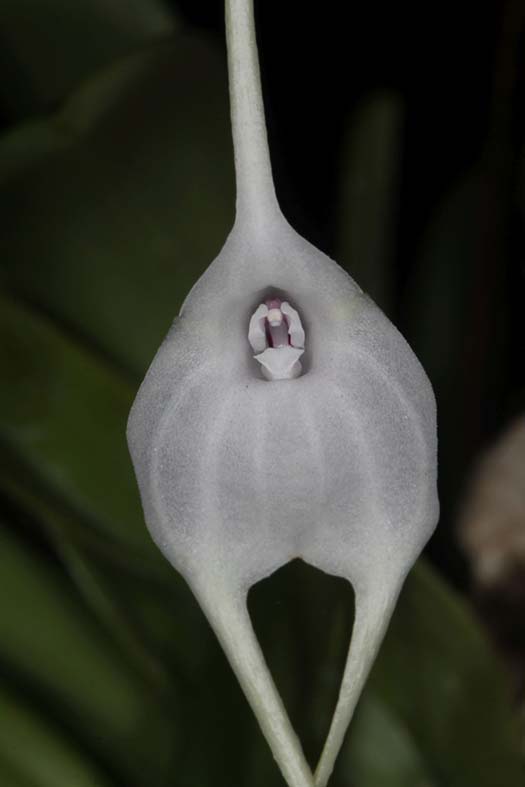 Masdevallia tovarensisA cool to cold growing epiphyte growing endemically in Venezuela at elevations of 1600 to 2400 meters. This plant is growing in a cool greenhouse as both a mounted plant and in clay pots filled with sphagnum moss. It usually has 2 to 3 flowers per spike but this plant was recently transplanted and only produced one flower per spike. |
|
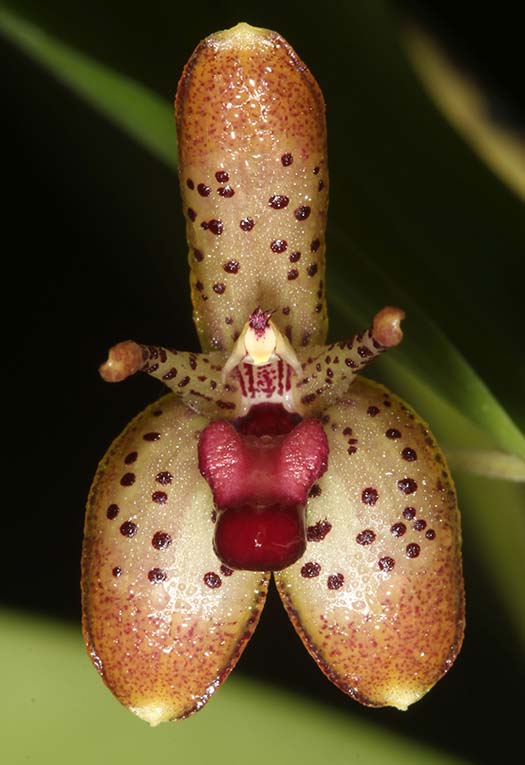
Myoxanthus punctatusGrows in southern Brazil at elevations around 670 to 1500 meters as a warm to cool growing epiphyte. This orchid is growing on a piece of cork oak that is generally hanging in a cool greenhouse. It was set in the clay pot only for the photo. Plant was acquired in the latest Five Cities Orchid Society (FCOS) auction and was donated by the Huntington Orchid Collection. |
|
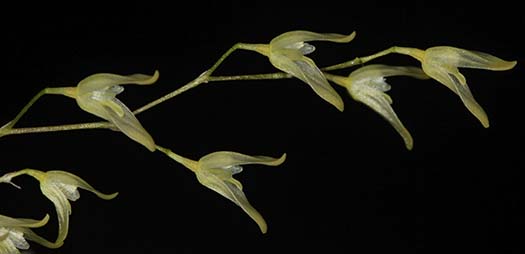 Pleurothallis grobyiA cold to hot growing species from 60 to 3200 meters in Mexico, Belize, Guatemala, El Salvador, Nicaragua, Costa Rica, Venezuela, Colombia, Ecuador, Peru, Brazil, French Guiana, Surinam, and Guyana. This plant is growing in a cool greenhouse mounted to a piece of wood with some sphagnum moss at the roots. |
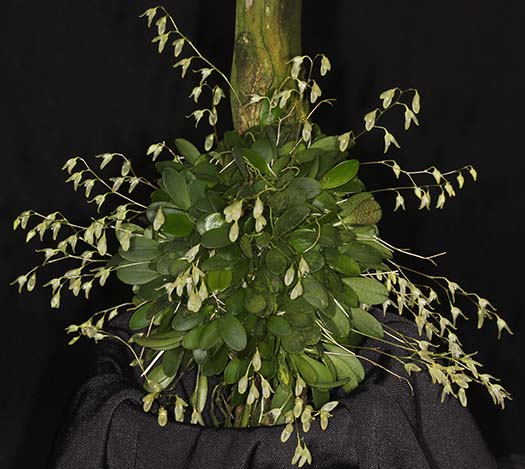 |
 |

Pleurothallis minutalis (oxios)The tag states the species is oxios but on Andy’s Orchids it shows the species name as minutalis. Found in a few states in Mexico and also in Guatemala as a cool to cold growing mat-forming epiphyte or lithophyte at elevations of 1500 to 2200 meters. Growing in a cool greenhouse mounted to a piece of wood. |
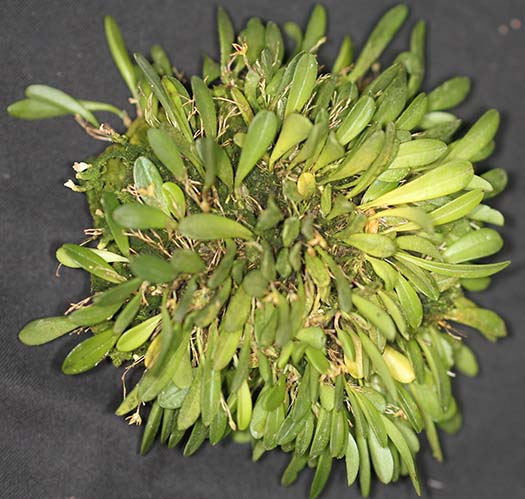 |
|

Pleurothallis pectinataGrows in Bolivia and Brazil around Rio de Janiero as a cool to warm growing epiphyte. Grows with the leaves hanging down. This photo was taken with the orchid laying on a table so some of the leaves are not hanging down as they would be when the mesh pot is hanging in the cool greenhouse. |
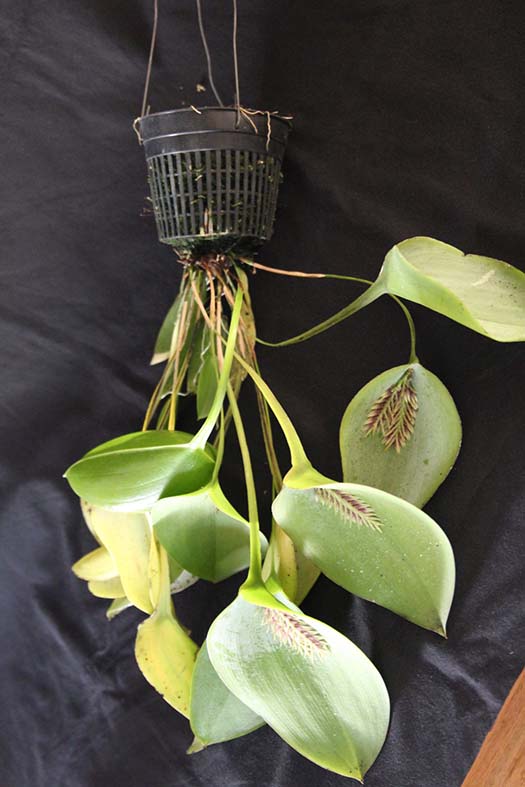 |
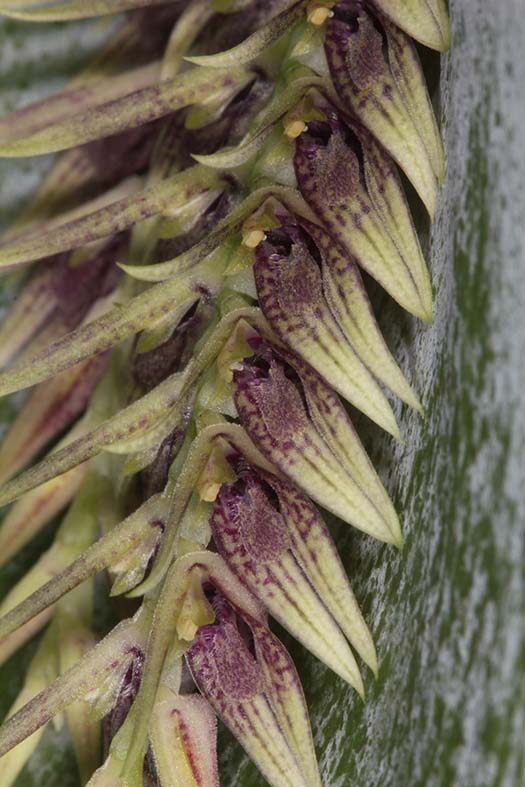 |
|
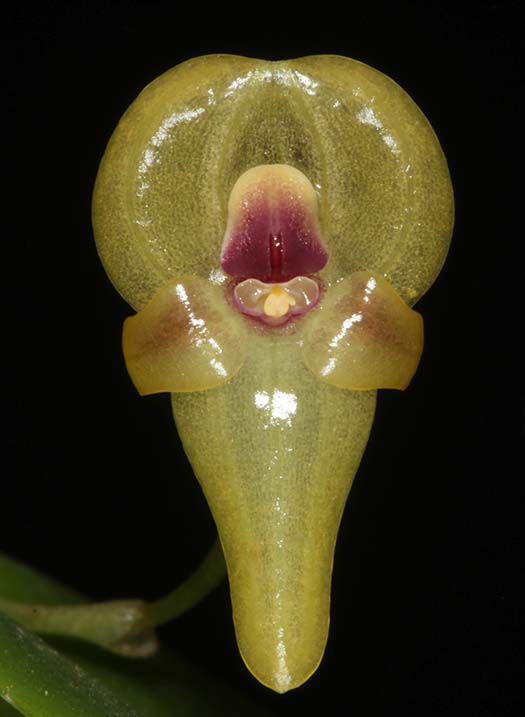
Pleurothallis scurrulaThis cold growing epiphyte is found in Peru at elevation about 2200 to 2400 meters. This orchid is growing in a clay pot filled with sphagnum moss that is in a cool greenhouse. |
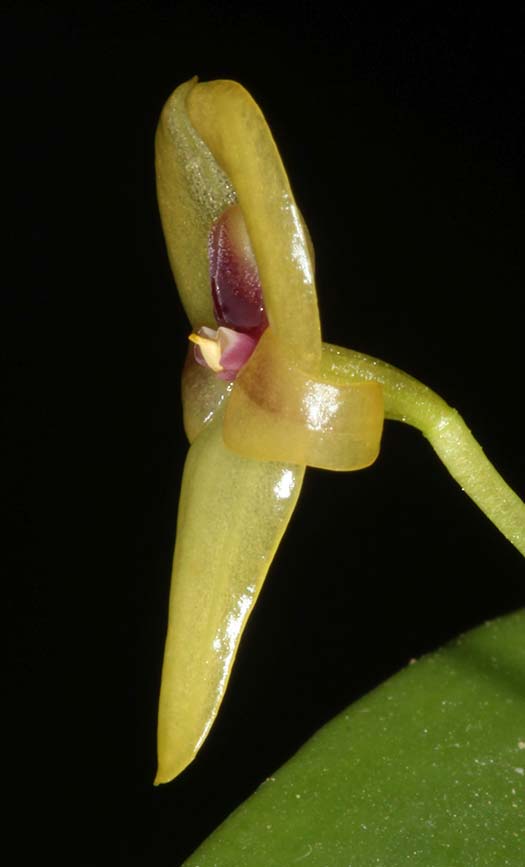 |

Pleurothallis strictaA cool to cold growing epiphyte found in Colombia and Ecuador at elevations of 1800 to 2500 meters. This orchid is growing mounted to a piece of wood with some sphagnum moss on the roots. It is growing in a cool greenhouse. |
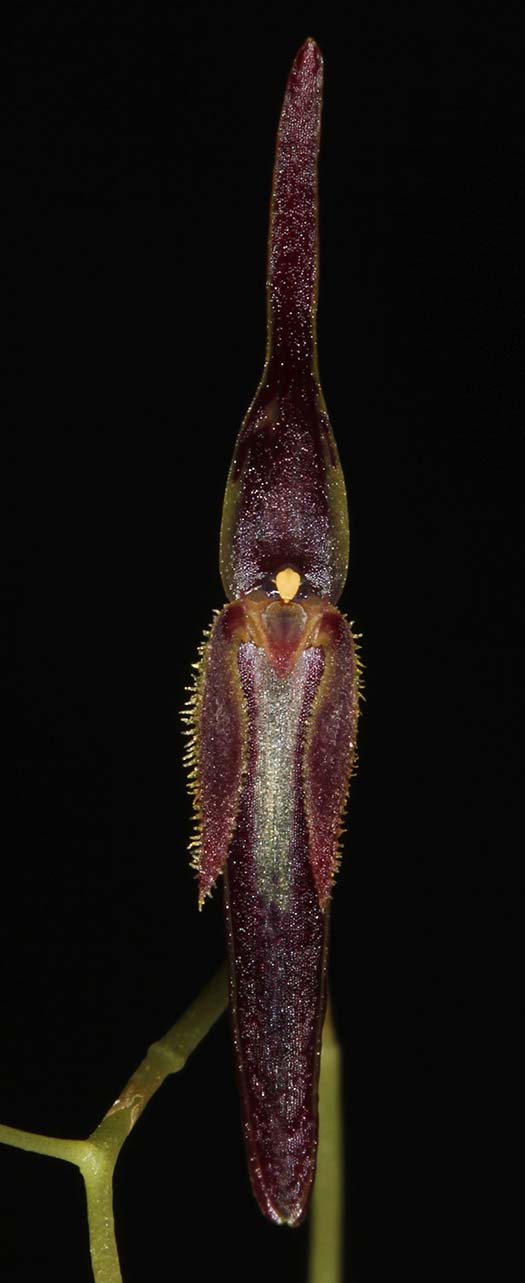 |
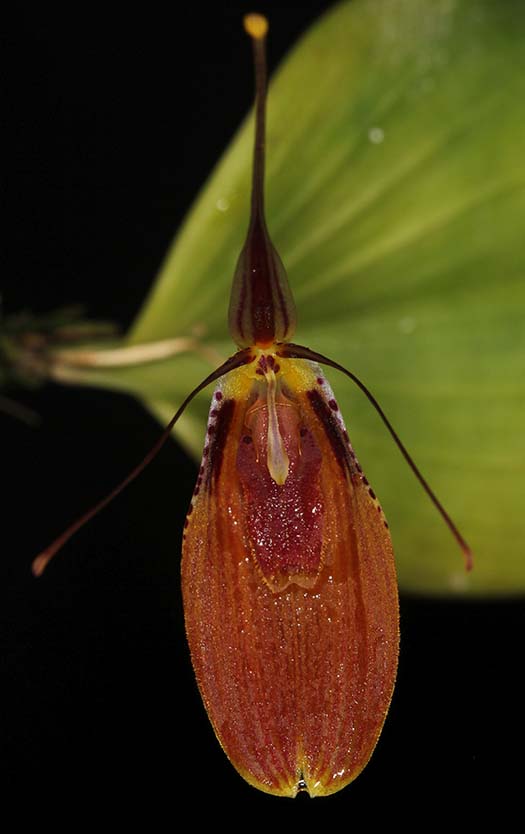
Restrepia cupreaA warm to cool growing epiphyte found on Colombia’s eastern slopes of the central cordillera at elevations of 1600 to 1700 meters. This orchid is growing in a clay pot that is filled with sphagnum moss. Grown in a cool greenhouse. |
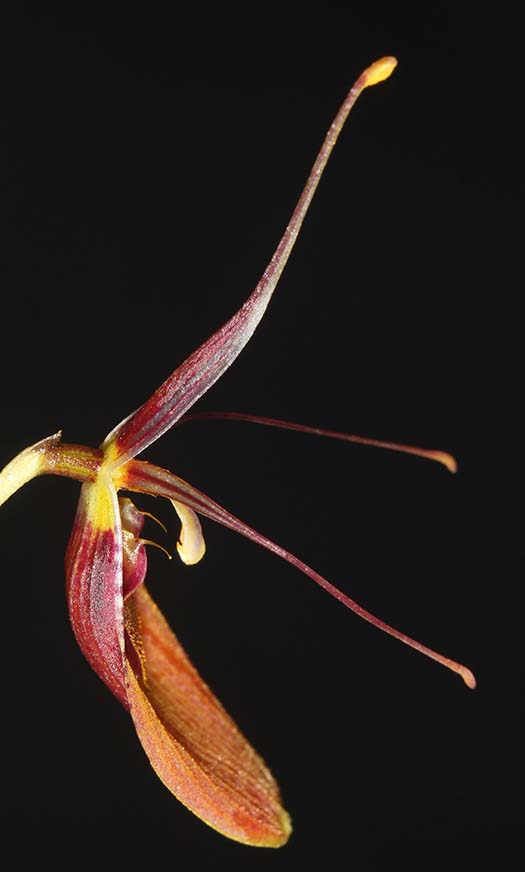 |
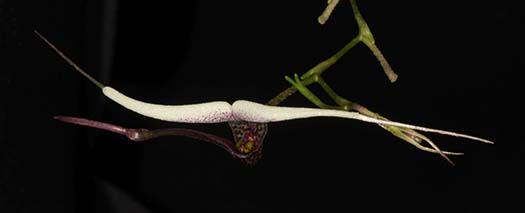
Scaphosepalum gibberosumA cool growing epiphyte found in the Antioquia department of Colombia at elevations of 1600 to 2000 meters. This orchid is growing mounted on a piece of cork oak with a small amount of sphagnum moss on the roots. Grown in a cool greenhouse. |
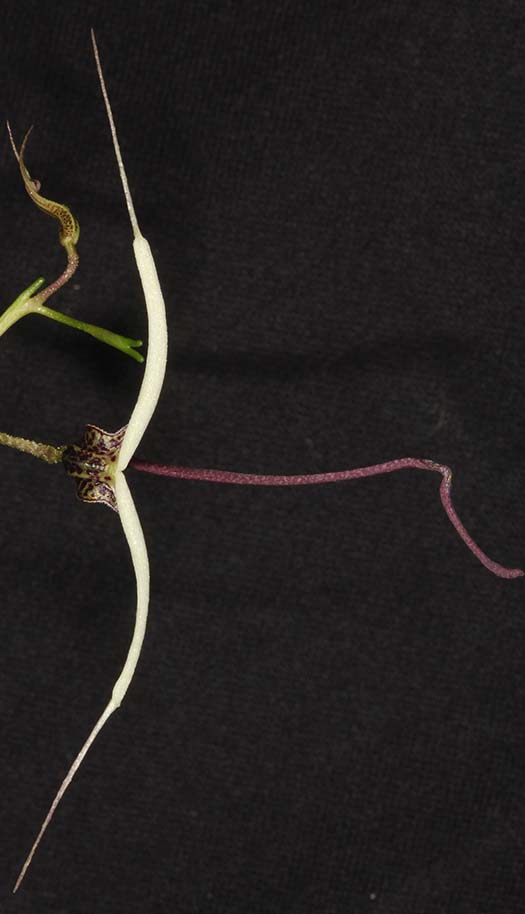 |

Scaphosepalum limaA cool to cold growing epiphyte or terrestrial found in Antioquia department of Colombia at elevations of 1800 to 2500 meters. This orchid is growing in a clay pot that is filled with sphagnum moss. This is a sequential bloomer and has been flowering on the inflorescence for at least one year. Grown in a cool greenhouse. |
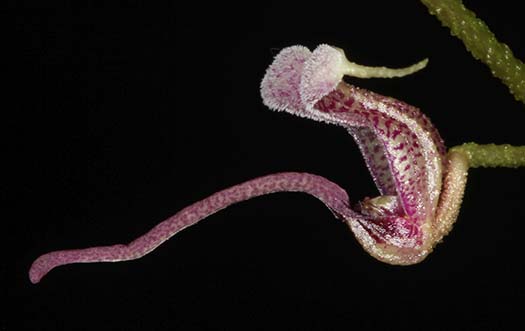 |
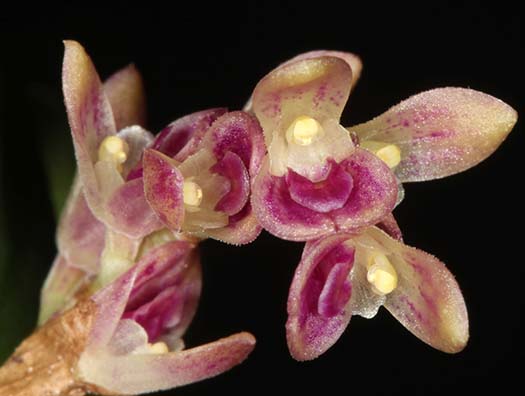 |
Pleurothallis recurvaA warm to cool growing creeping epiphyte found in Ecuador, Peru, Bolivia and Brazil at elevations of 600 to 1400 meters. This orchid is growing mounted at a piece of wood placed in a cool greenhouse. |
From Cheryl DiDonna:
|
|
Now on the Big Island, Hawai'i |
|
 |
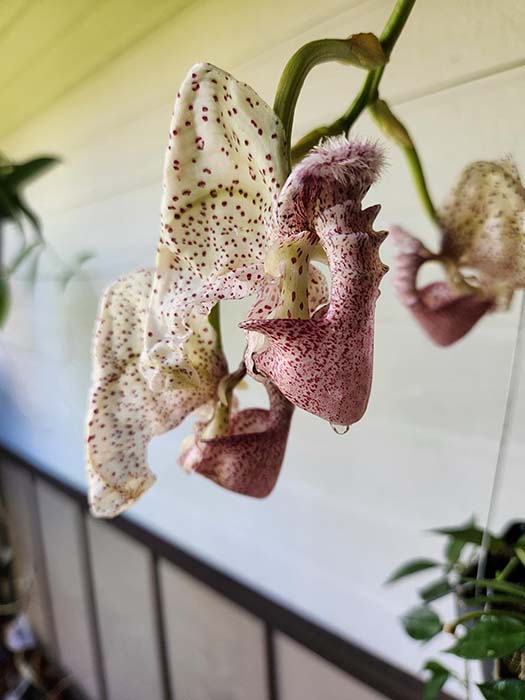 |
Coryanthes alboroseaThis is a recent acquisition for Cheryl, who is discovering species that are not often seen where she used to live in southern California. This "bucket orchid" is native to hot, low-elevation tropical forests of Peru, where it often grows near ant nests. The Big Island will provide the heat and humidity that this weird and beautiful orchid needs to thrive. |
|
From Scott McGregor:All orchids grown outdoors, coastal southern California |
|
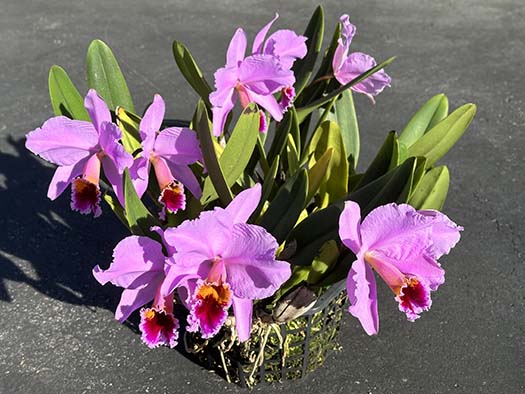
Cattleya percivaliana 'Summit' FCC/AOSMy favorite outdoor Cattleya species— a reliable November bloomer, easy to grow, doesn’t mind cold/rain, stays compact, and nice flowers! |
|
Bulbophyllum pardolatumGrows well outdoors and floriferous, but alas the flowers on this mini are only open for a couple hours in the morning and then close by mid-day, but re-open over many days. |
|
Cleisocentron gokusingiiOne of the few “true blue” species, a large plant can bloom several times per year with pale blue-gray flowers. Only got one spray of flowers this time, but about once per year the plant will do a nice flush bloom. |
|
Ceratostylis retisquama (rubra)Been getting repeated blooms on this brightly colored species from the lowland Phillippines that seems to be happy with our climate outdoors. |
|
Laelia gouldianaTwo Laelias, it's Laelia season! |
Laelia anceps var. veitchiana |
From Roberta Fox:
|
|
Outside in the Back Yard: |
|
Angraecum longicalcarNative to Madagascar, from the central highlands. In its habitat, it grows semi-terrestrially among rocks, in exposed areas. I grow it in filtered sun (strong morning sun) in a pot with medium bark. |
|
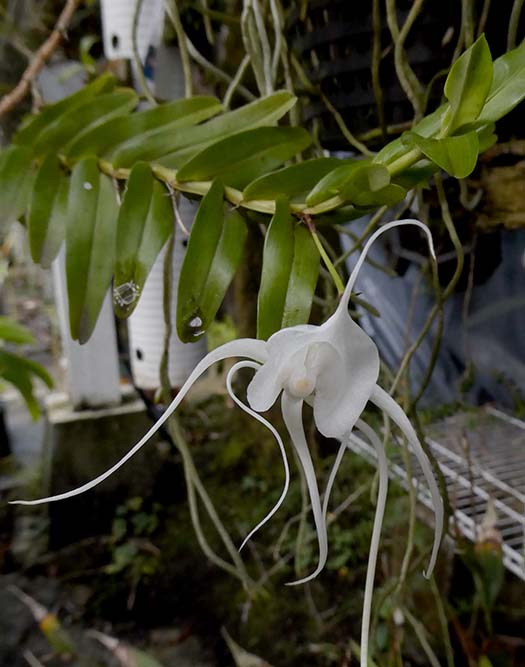
Angraecum germinyanumThese spidery flowers are an interesting variation on the typical Angraecum shape. The plant extends its growths in mutiple directions, and has largely escaped its basket, so the flowers float in the air. This species is native to the central plateau region of Madagascar, where reported temperatures, according to the Baker Culture sheet, can range from 93 deg .F to 33 deg F. It grows shady and damp, but clearly it isn't fussy about temperature |
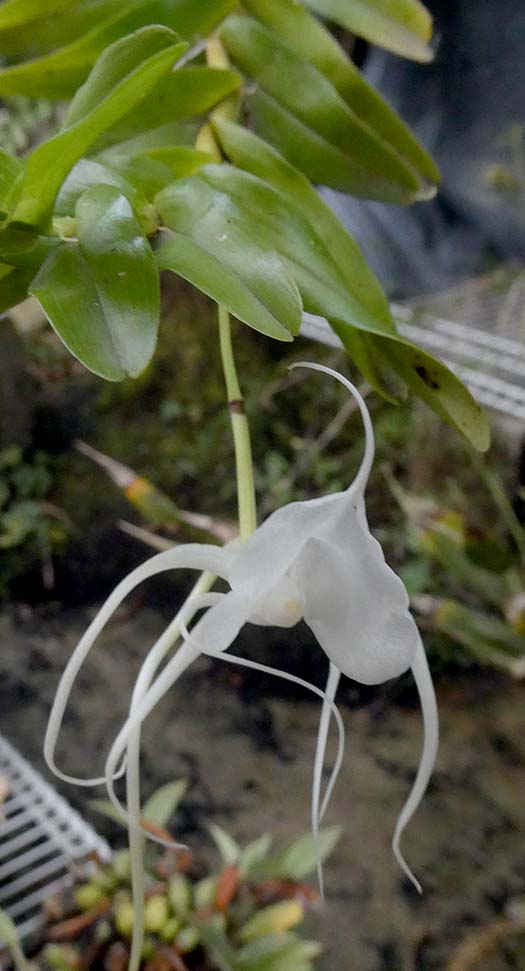 |
 |
|
Ansellia africanaWhile these typically bloom in the spring, clearly the fall is a good time for them too. Here are two color forms. On the left, the cultivar 'Fascination', on the right var. nilotica 'Sometime two time'. These come from a very large part of Africa, with many different color forms. |
|

Cymbidium erythrostylumNative to Vietnam, at an elevation of about 1500 m. It grows under "standard" Cymbidium conditions, but somewhat shadier than most of them. I find its shape very pleasing. (Not "round and full" but the lovely lip is likely what hybridizers like, combined with other things) |
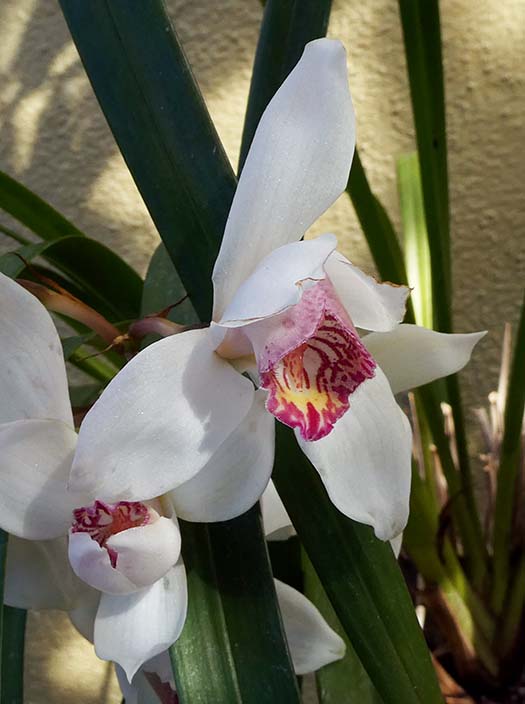 |
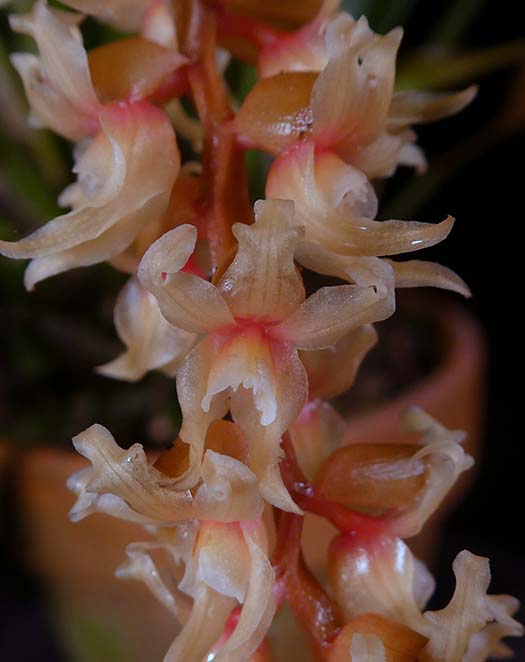 |
|
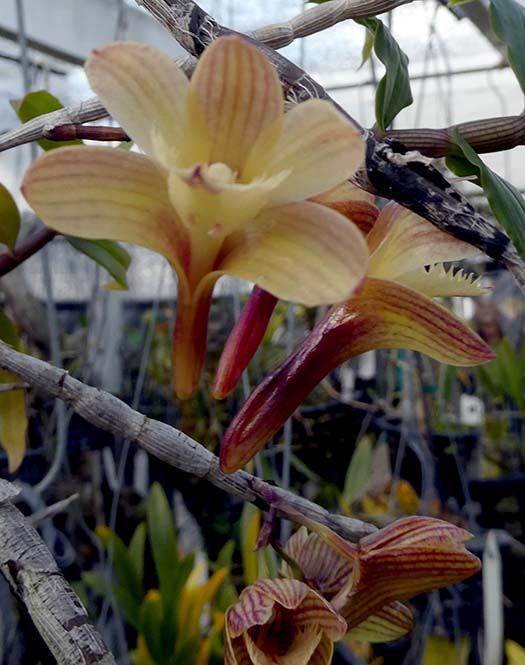
Dendrobium serratilabiumNative to the Philippines on the island of Luzon, but there's not a lot of information about elevation. Clearly it is adaptable since it thrives on my patio where it gets quite chilly. It blooms on bare canes. I don't dry it out, but it's in a small basket so it does dry fairly quickly and that seems to be all the "rest" that it needs. |
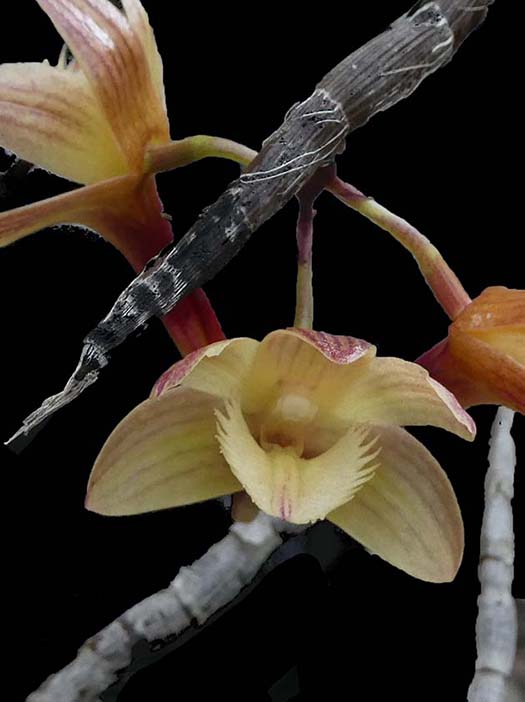 |
|
|
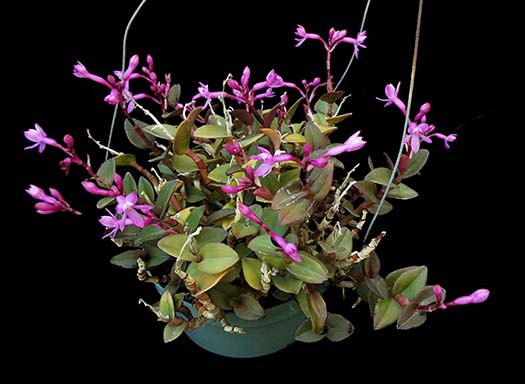
Epidendrum quisayanumLots of cute brilliant flowers. It is native to Ecuador, elevations 2200-3300 m, on steep, wet, rocky embankments. The high elevation would indicate that it will do better in coastal areas than inland, cool and damp is ideal. |
|
 1.jpg)
Laelia anceps
|
 2.jpg) |
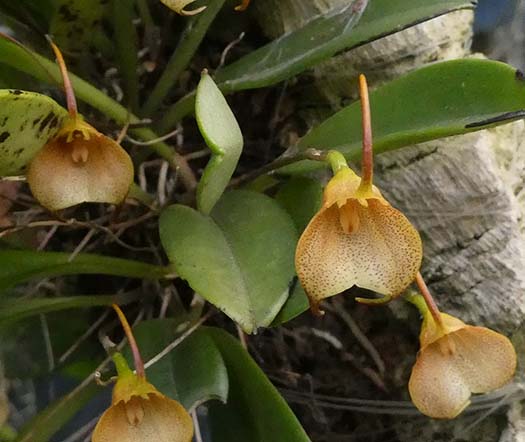
Masdevallia floribundaNative to Central America and southern Mexico. It is the most northerly-occurring member of the genus, and the only one found in Mexico. The color isn't exciting, but it produces lots of flowers (living up to its name) and is also one of the most forgiving members of the genus for growing over a wide temperature range. It can bloom 2 or 3 times a year. |
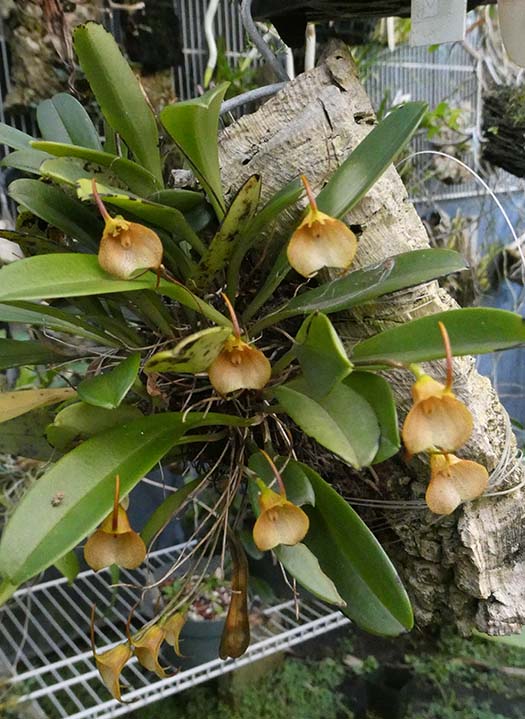 |
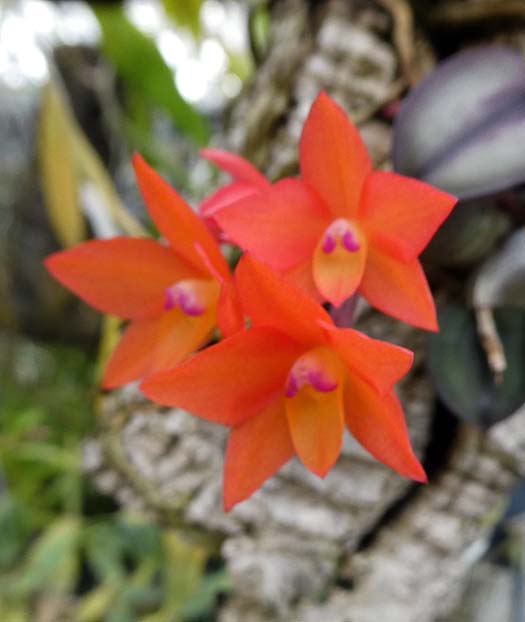
Cattleya (Sophronitis) cernua ssp. mineiraFrom southeast Brazil. This is a very vigorous plant, with multiple growths that bloom over a month or so, with long-lasting flowers. The flowers cerainly make up for small size (about 1/2 inch) with brilliant color - and multiple flowers on an inflorescence. |
|
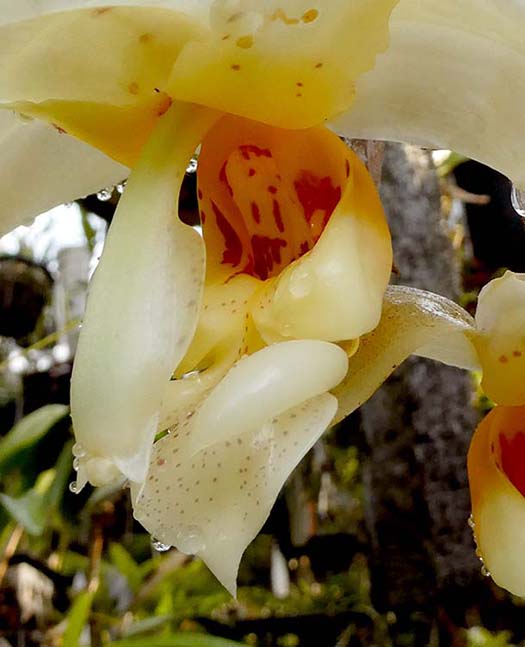 |
|
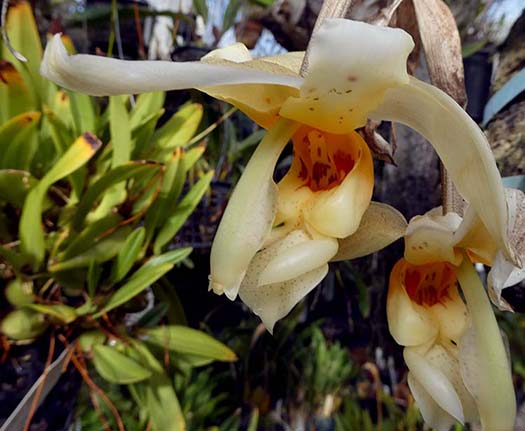 |
|
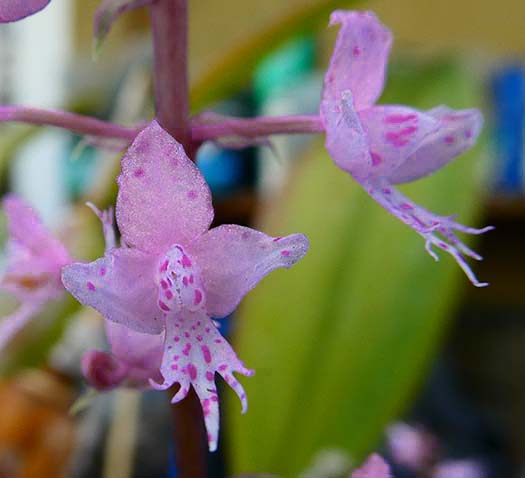 Stenoglottis longifoliaA South African terrestrial. After it blooms, it goes dormant, losing its leaves. The leaves start to go even during the bloom. The flowers open over a period of several weeks to a month or more. I have found that this is one that I can't bring into the house while it's blooming or the inflorescence stops producing flowers - it seems to need to stay cool to extend the bloom time.
|
 |

Trichosalpinx sp. PeruThis one needs some attention to appreciate it. The tiny flowers grow on the undersides of the leaves so one has to peek underneath to see them. But it blooms on and off all the time. All those brown bracts were the location of flowers in previous bloomings. Leaves are dark green on top, dark purple on the underside, a nice contrast. |
 |
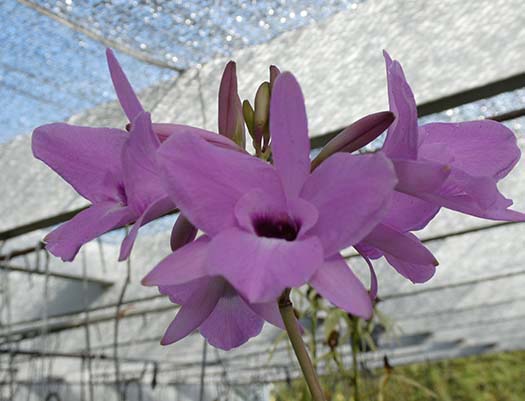 Laelia rubescens f. roseaThese flowers are delicate and relatively short-lived, but graceful on the end of long spikes. Native to much of Central America and southern Mexico. |
 |
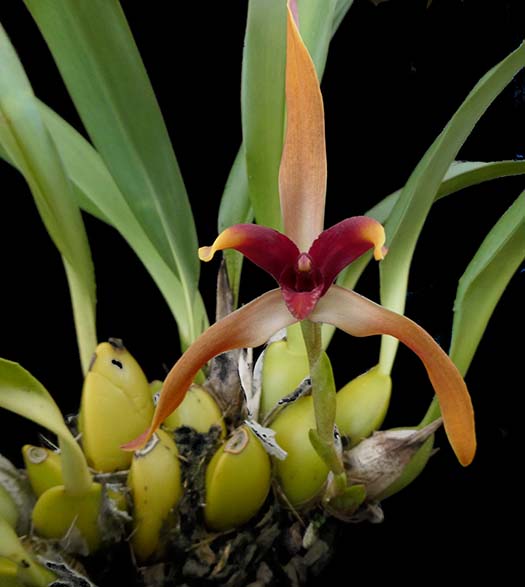
Maxillaria tonsbergiiNative to Venezuela. No information about elevation, but it grows on my patio so must come from high enough to tolerate cool winter nights. Fragrant sunset-color flowers have heavy substance, and are quite long-lasting. |
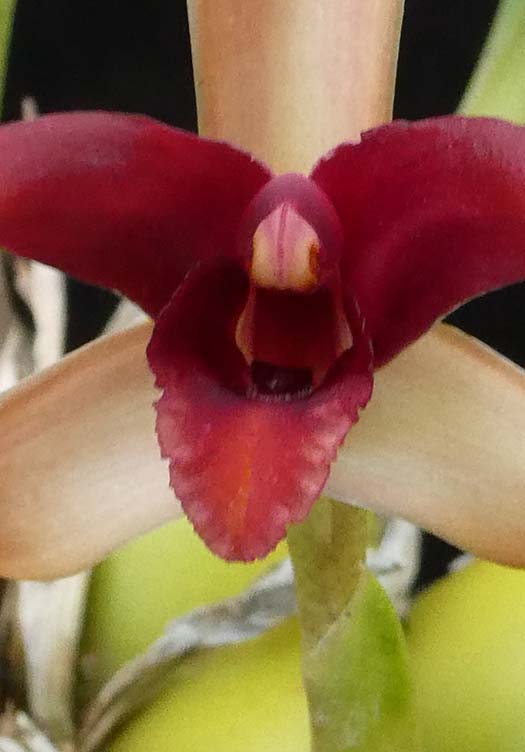 |
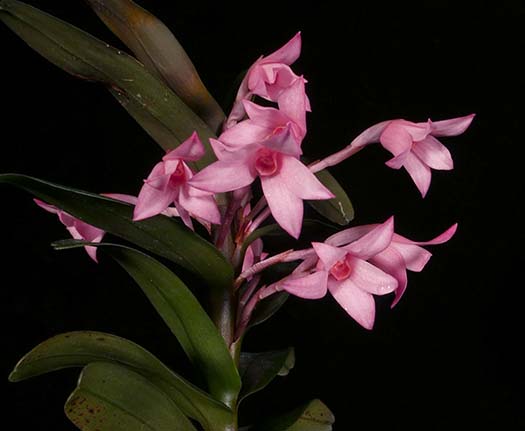
Maxillaria scalariformisStriking contrast between the pink flowers and dark green leaves. This Panama native is marginal as far as winter temperatures are concerned. Andy Phillips grows it outside very well, but I have killed several when they got cold and damp. My climate is very similar to Andy's Orchids, but clearly not quite the same. I now move it into the greenhouse when nights get cold, and it does very well for me. The plant needs to stay very wet, and is clearly much happer with a bit of warmth. The elevation range given in IOSPE is 1000-1300 m, an intermediate to cool range. It typically blooms about twice a year. |
|
In the greenhouse... |
|
Trigonidium egertonianumHabitat ranges from southern Mexico throughout Central America, to Venezuela. Flower spikes are about 8 inchs. It produces spikes that open over a period of a month or so, several times a year. Latest taxonomy lists this as Max. egertoniana. |
|
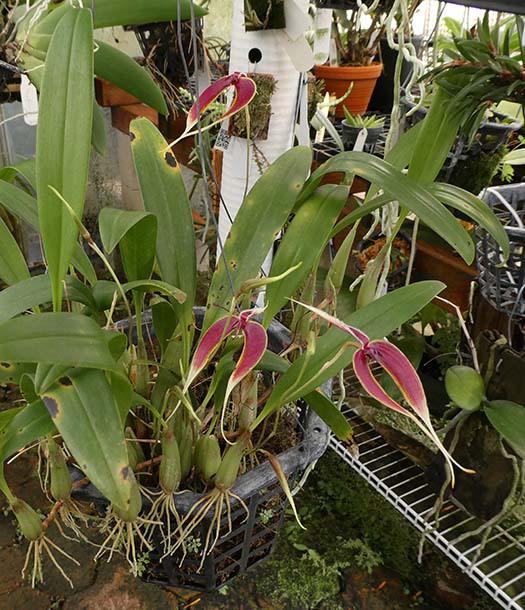
Bulbophyllum maxillare (blumei, masdevalliaceum)This is a very vigoroous plant that does not want to stay confined to its basket.Note all the buds that have yet to open. Flowers are not long lived, but there are lots of them blooming in sequence. I have seen it sold under all three of these names... if they seem to look alike, it is because they are synonyms. |
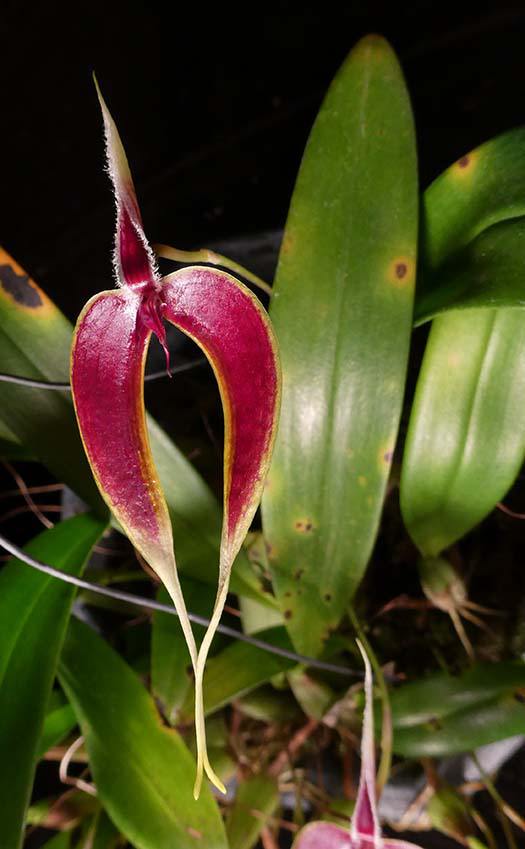 |
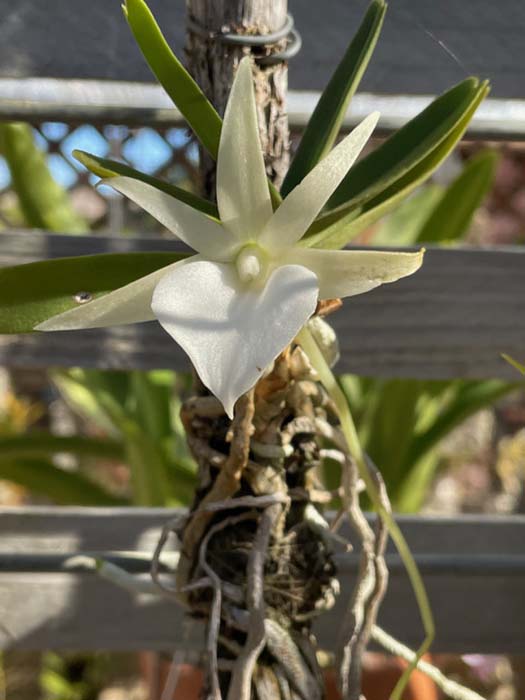
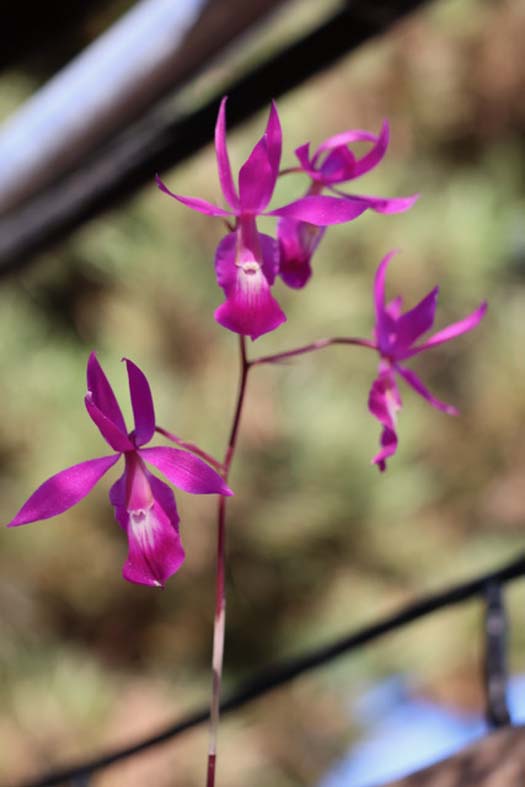
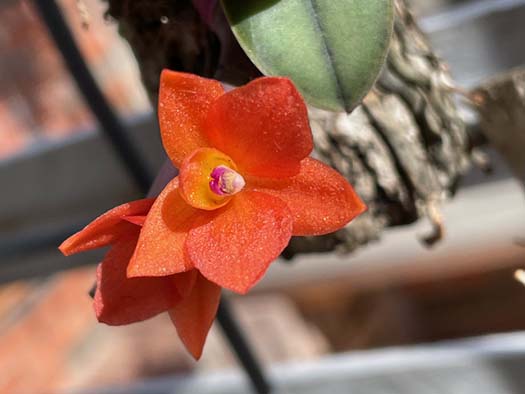
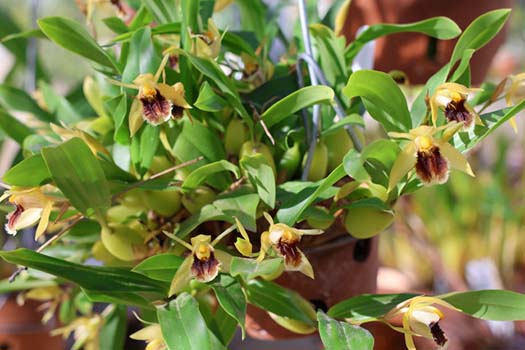
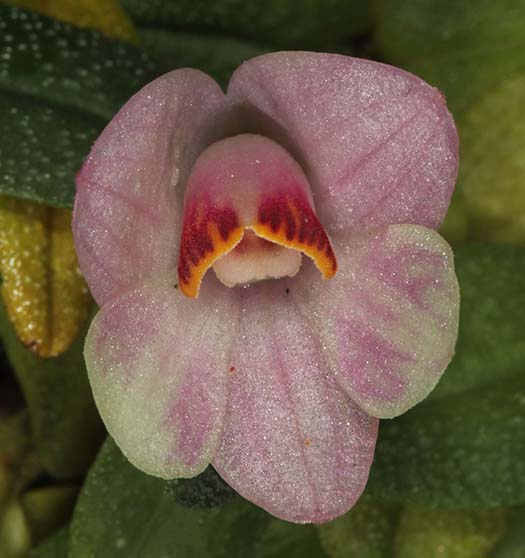

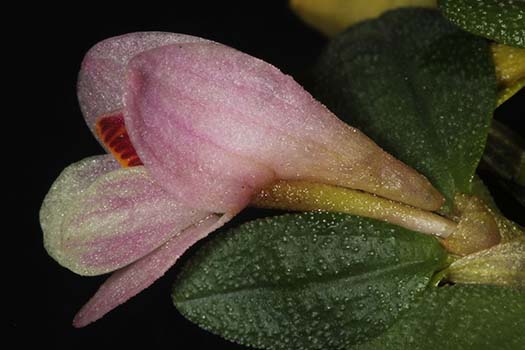
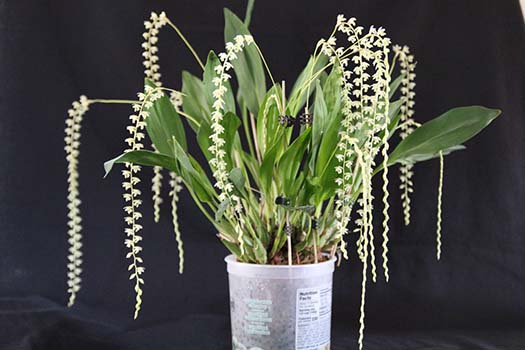



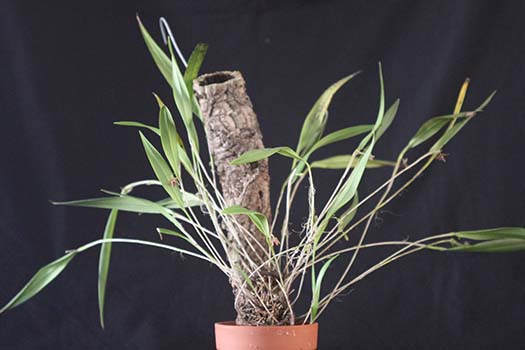
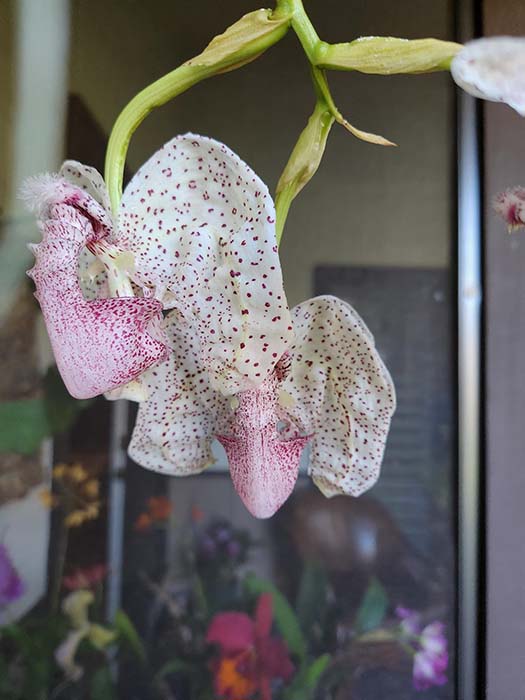
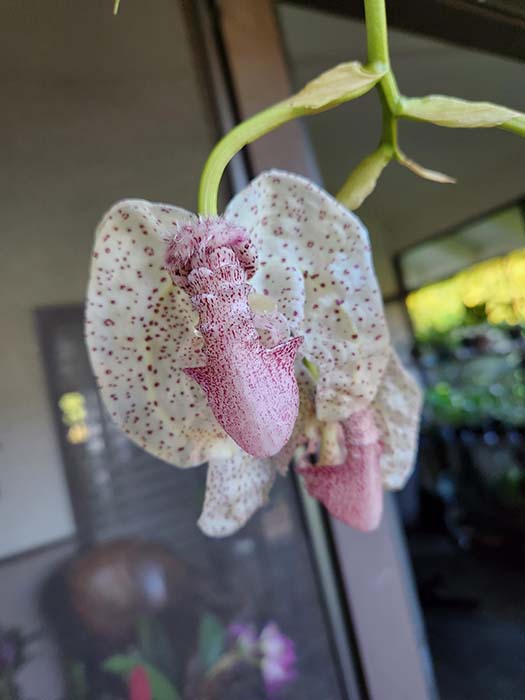
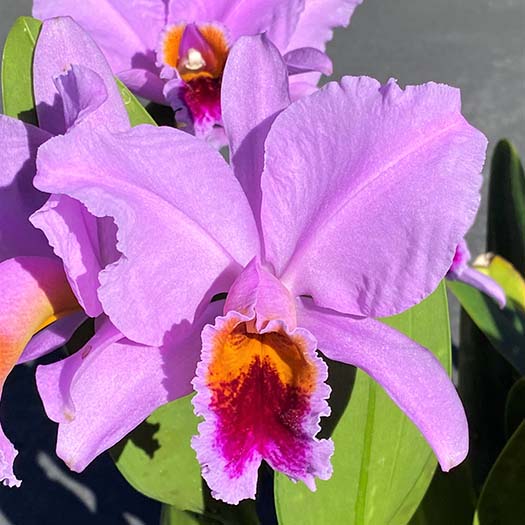
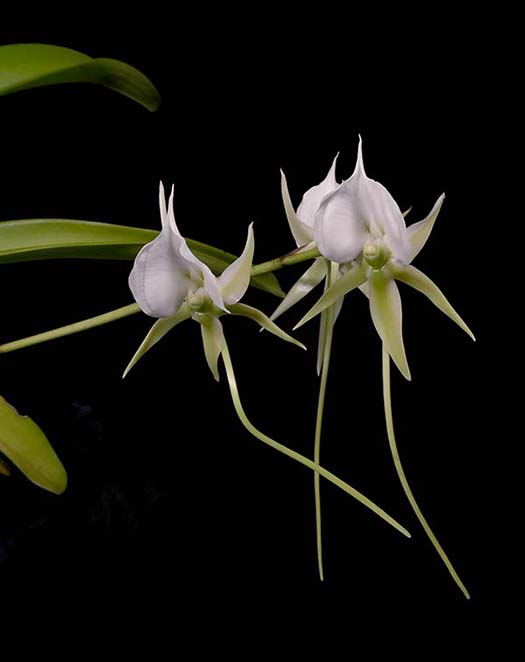
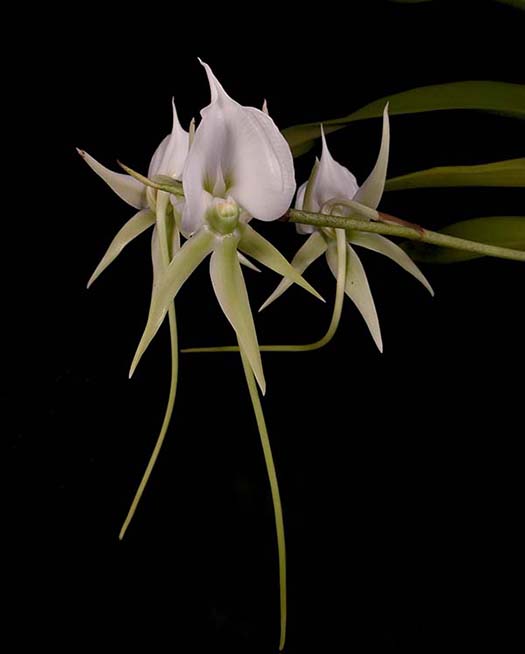
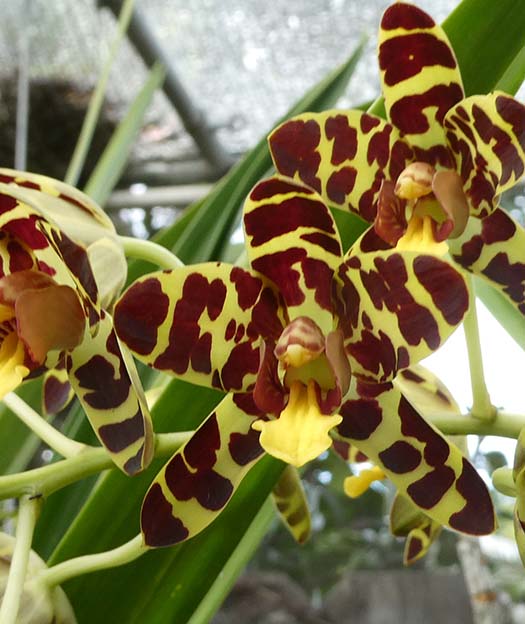
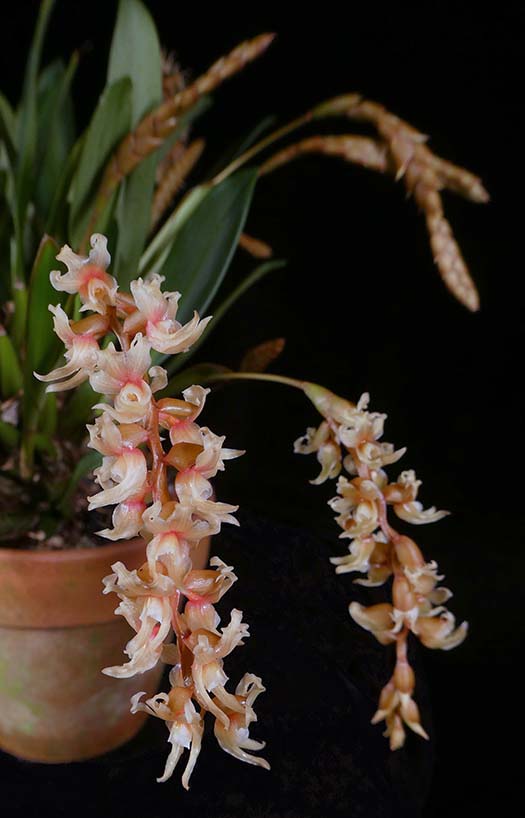
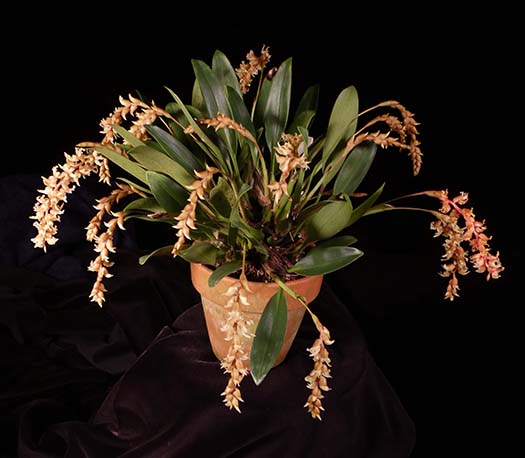
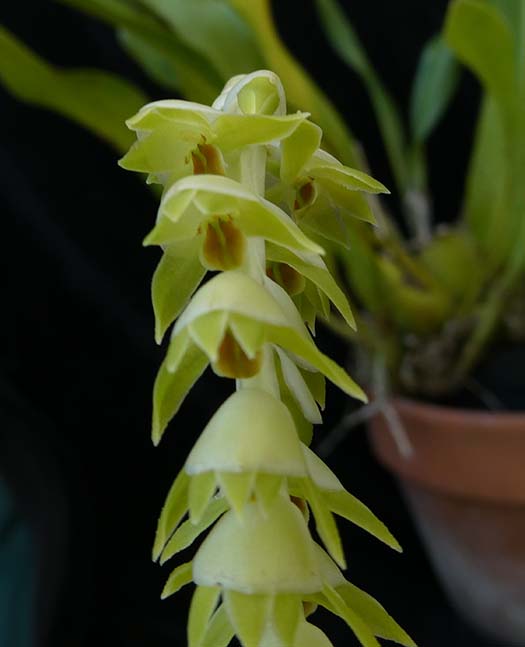
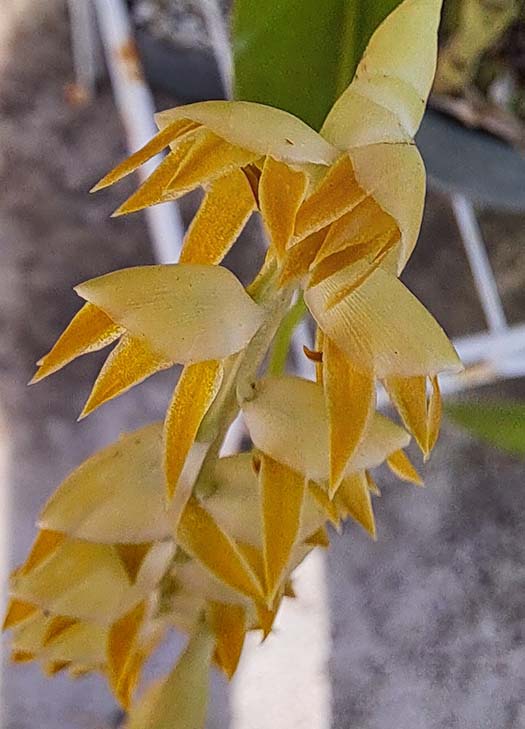
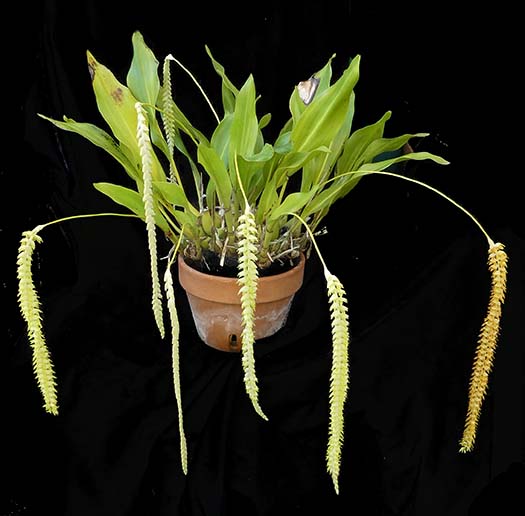
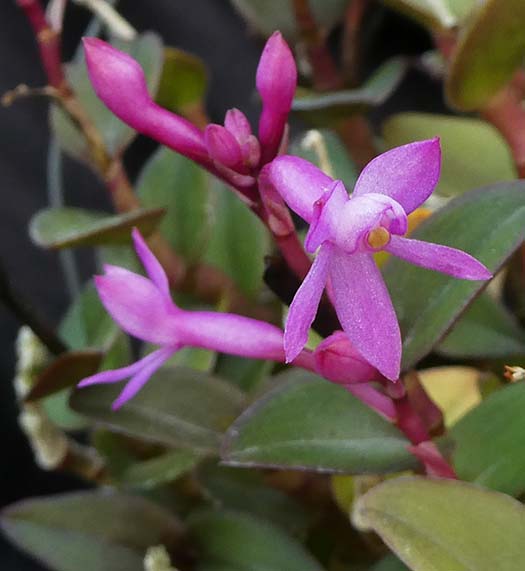
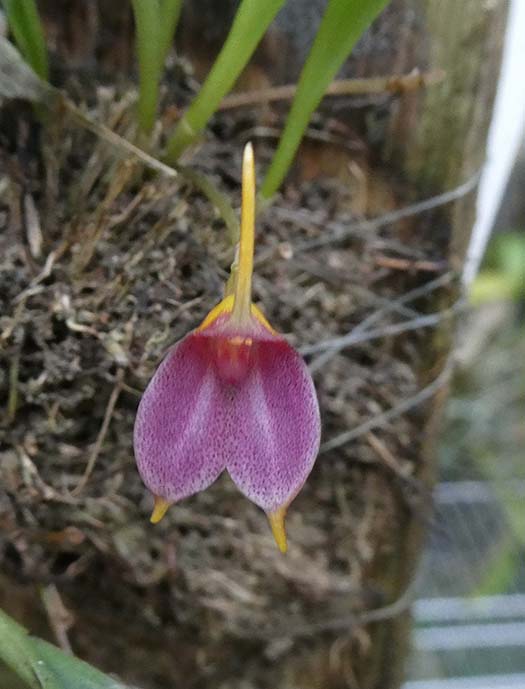
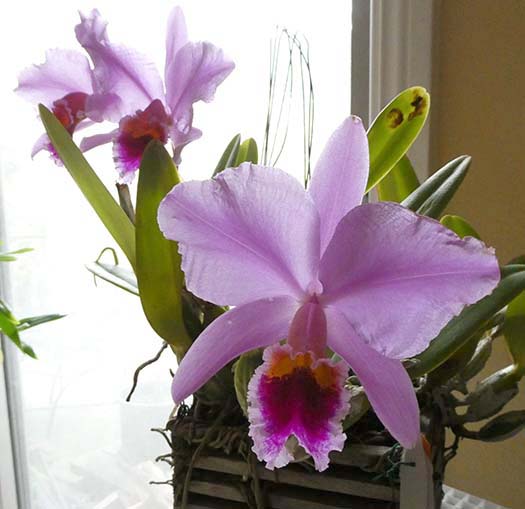

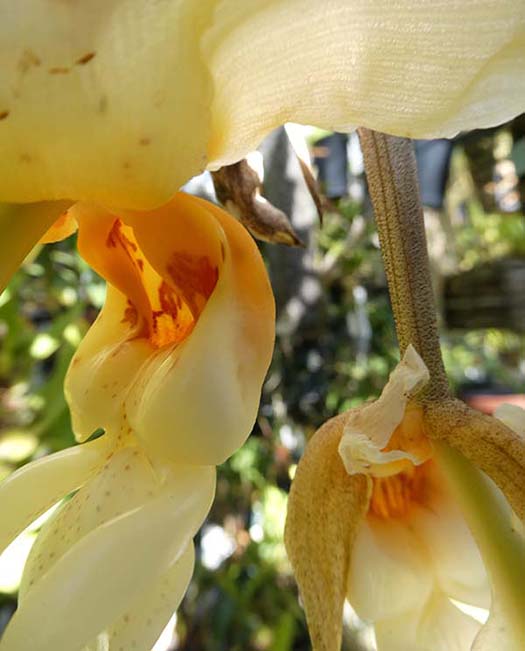
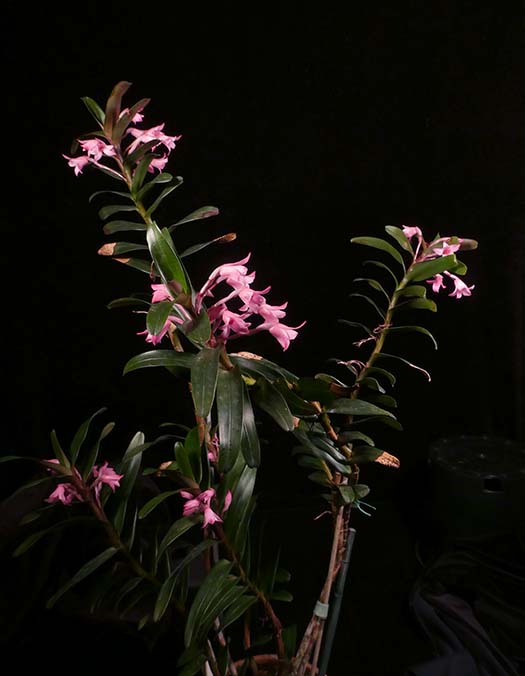
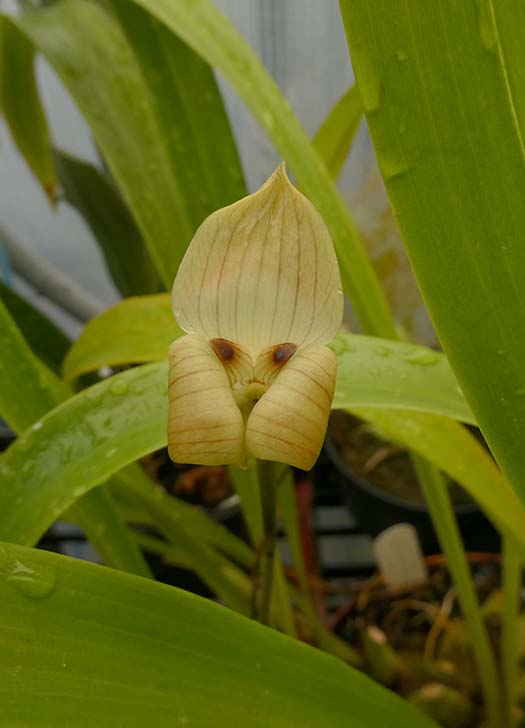
.jpg)